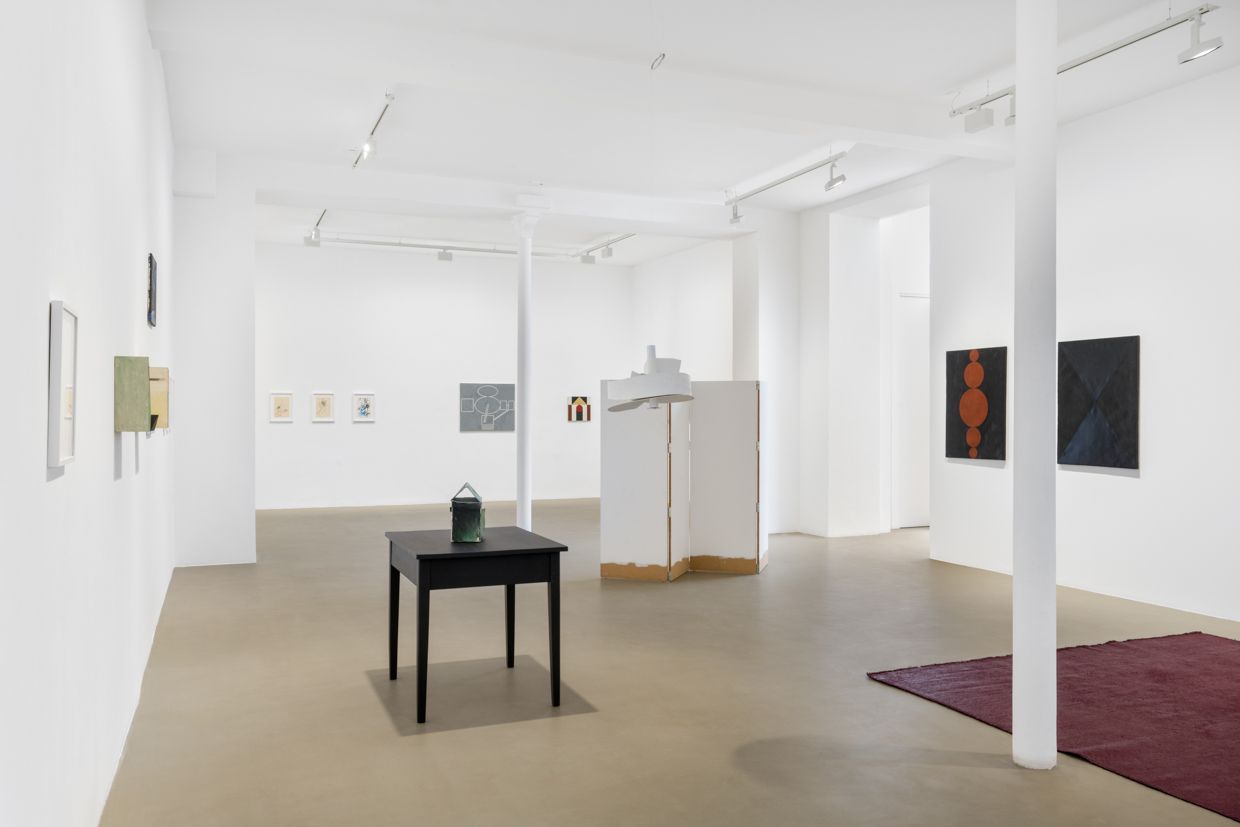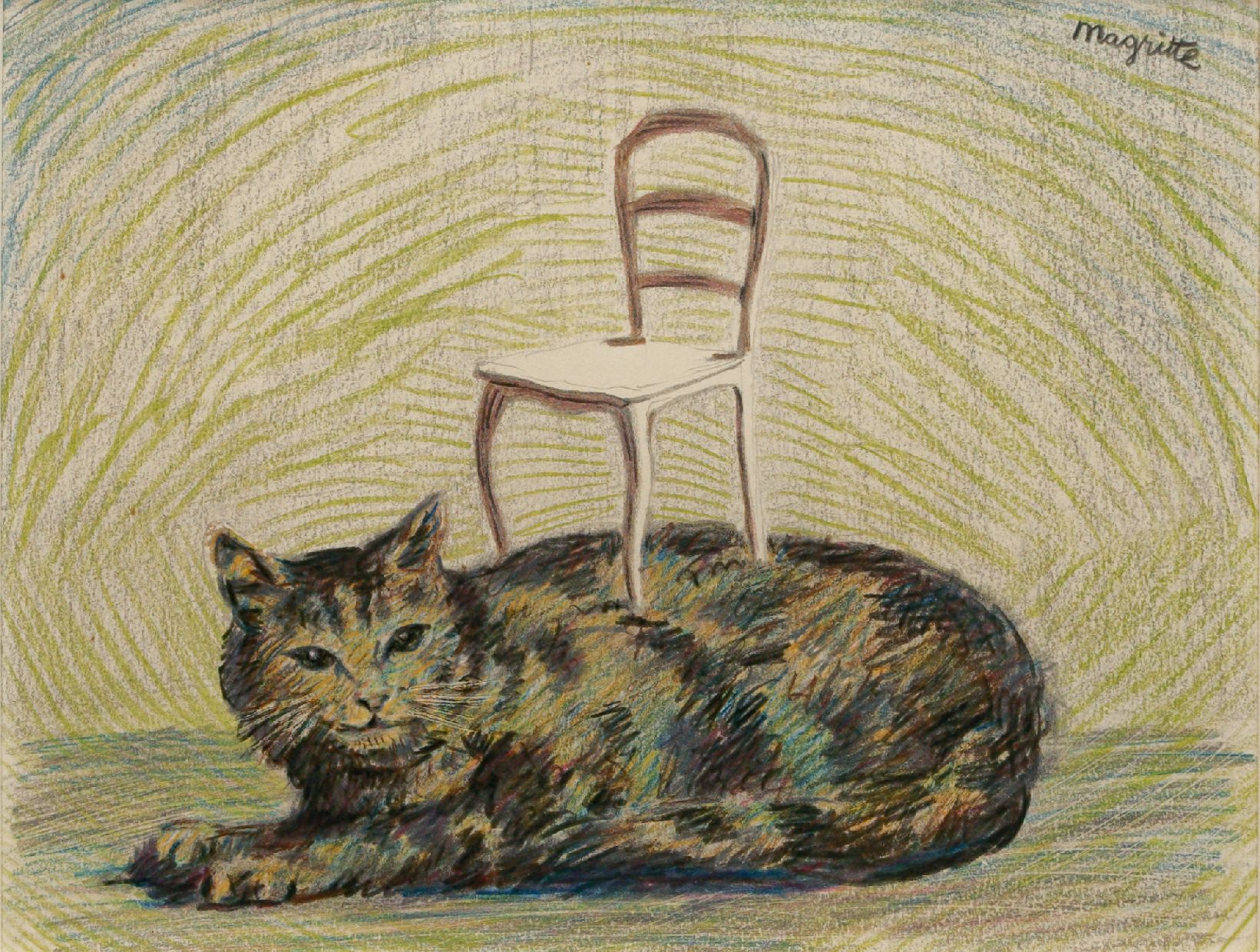" The knowledge we gain through art is an experience of the form or style of knowing something rather than a knowledge of something "
Susan Sontag
For this first exhibition at the Chantal Crousel Gallery, Heimo Zobernig displays a set of pieces mostly stemmed from a series initiated at different times, and which must be put back in the framework of a " works complex " . These works, more or less recent (between 1986 and 2008), have never been shown in France and are brought together here in a subjective retrospective. Beyond the effect of primacy, it is important at this point to be reminded that this exhibition has been the first one in France for 14 years (the last three taking place at the Villa Arson, the Sylvana Lorenz Gallery and the Fondation des Arts in Paris in 1991; then, at the Unité d'Habitation Firminy in 1993, and at Nice Fine Art in Nice in 1994) . Since, it seems there has been a lack of curiosity, if not total oblivion, towards a whole German and Austrian scene, from which Zobernig surely suffered. Yet he was at that time closely related to the community of artists whom gravitated around Cologne, oscillating between institutional critique and " glamour art " (in Josef Strau's words), trying to reconcile both, within a particularly demanding critical context as well. The current situation seems favourable to a rediscovery of all these artists and therefore we must apprehend in one move their careers (that we missed at that time) and their recent production.
Here, Zobernig has decided to render the situation of his studio in Vienna. It is located inside the building dedicated to sculpture at the Kunstakademie, near Prater Park. Through the cover of the catalogue of his last exhibition at the Kunstverein in Braunsweig , we can gain insight into the atmosphere of the workplace: wide windows onto a leafy patio. The studio is the place of an unremitting research about forms and problems which are incessantly raised by art production. As, from Zobernig's point of view, art can be nothing but existential and it is the artist who tries to solve the problems: problems of painting (foreground and background, white and blank lines, grain, adhesive tapes, colors, etc); problems of sculpture - such as the sculptures with shelves, which are the result of a sequence of choices - or others. These choices are not logical ones, they are rather a concern of intuition and game. In this way, in the case of the paintings made up with coloured strips, there are neither mathematical rules, as in Sol LeWitt's work, nor any implementations of colour theories . " To be automatic is a disaster for the brain ", he says. The main issue of these intuitive variations on each of the different possible structures would be to avoid emptiness.
He always works precisely to preserve a strategy of avoidance. For that, he proceeds in the artistic fields of Minimalism, Conceptual Art and Geometric abstraction, with flaws, paradoxes, processes of incompleteness, where often the material and the quality of the making are equivalent to a demonstration, such as the sculptures made of the cardboard tubes of toilet rolls (as the Laocoon presented here), or the sculptures made of painted cardboard. Thus, in the exhibition, the sculpture takes the shape of the organon-box - a box created by Wilhelm Reich to contain, supposedly, an energy present in the atmosphere called "orgon" - even if the work seems to draw its inspiration from the most subversive representative of the Freudian community, it is ironically laid out as a minimalist sculpture. The Love/Hate series refers to Robert Indiana's painting (LOVE, 1966), used again in a more political way by General Idea (AIDS, 1987), to create a dystopia by mixing the words Love and Hate, and reversing Indiana's utopic vision.
Since the beginning of the nineties, Zobernig has not stopped questioning the artist's subjectivity and pushing the logics of identity relating to a more and more restricting art system. One of his ways to tackle this issue is to reintroduce his own body in his work. With the strangely asexual puppet bearing his effigy, he brings his own presence in the exhibition, like a " quiet and watchful guard" . While rejecting the Viennese Actionists' position, he keeps their sense of the scene and the necessity of a bodily experience, adding distanciation and desubjectivation.
The canvas made of Swarovski crystals, the ultimate in seduction, takes back to the conception of the modern museum and the diamond structure of Mondrian's paintings. Since 2000, following the research of the latter and the Australian artist Ian Burn, Zobernig has been creating " grid paintings " (built on a grid structure). In the two partially coloured grid paintings presented here, he uses chromatic canvasses " chromakey " , paints them white and then strips off the adhesive tapes he has applied. Conversely, two other canvasses show a white grid, after the canvass has been covered with an acrylic ultramarine painting similar to the " Blue Box ".
While referring metaphorically and formally to modernity , it is through these new variations on the grid structure that Zobernig pursues his aim: to allow the viewer's subjectivity free rein by avoiding any interpretation. As a History of Art practitioner, he appropriates in this way some of the materials (form and formal problematics) which he believes essential, to give them a new direction. This research refers to the issue of the conditions of emancipation, initiated from the spectator's point of view (recalling a recent text by Jacques Rancière) , which takes part in reopening the current debate on the stakes of such positions in contemporary art.
Catherine Chevalier.
1. The catalogue of his last retrospective, " Katerlog ", gives its structure in 2003.
2. Concerning these last interventions : " In 2000, he makes the cover for a special issue of Art Press, " Oublier l'exposition". More recently, in 2004, he participates to group exhibitions : " La Lettre volée ", Musée des Beaux-Arts in Dôle, and " Before the End ", at the Consortium in Dijon. In April 2005, a " damaged " mirror, which surface has been grooved with thin stripes, is presented at the Cité Internationale des Arts ; it exactly reflects, litterally and metaphorically, different Parisian scenes associated to current exhibitions (John Armleder, Art and Language, John Bock, Liam Gillick, Thomas Hirschhorn, Rirkrit Tiravanija) ". (From Catherine Chevalier, " Heimo Zobering ", Frog n°2, Fall 2005)
3. Heimo Zobernig, Kunstverein Braunschweig, Verlag Walther König, Cologne, 2006.
4. See the book Farbenlehre aus Farbenlehren (" Colour theory made of colour theory ") he made with Ferdinand Schmatz.
5. Heimo Zobernig's words.
6. See Markus Weh, " The Crystal Soul of the Modern Museum ", in Heimo Zobernig, Kunstverein Braunschweig, op.cit.
7.The " chromakeys ", among which we find a certain ultramarine blue (called " Blue Box "), the Greenbox, the Redscreen, … are of common practice in videos, for their quality of " keying " - that is, the combination of materials from two different video sources, " whereby a certain colour value is filtered out of one film in order to record new material onto the empty spaces ". See Katerlog, MUMOK, Vienne, 2003, p. 343.
8. See David Pestorius, " Due Process, some notes on Heimo Zobernig's grid paintings and their accidents ", in Heimo Zobernig, Kunstverein Brauschweig, op.cit.
9. Jacques Rancière, " The Emancipated Spectator ", in Artforum, March 2007.
更多

















